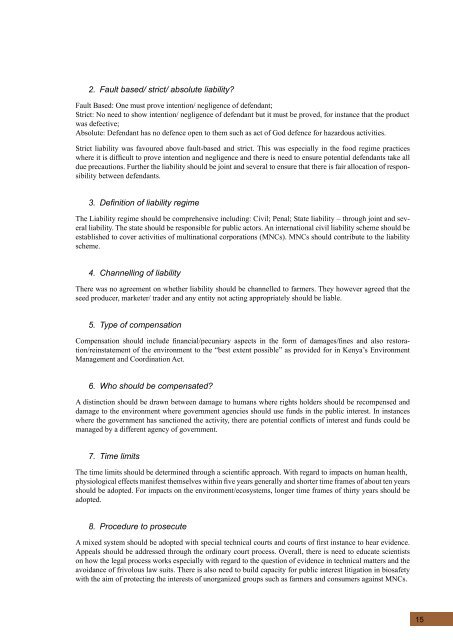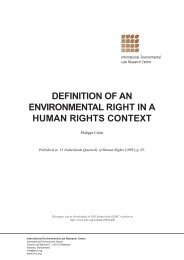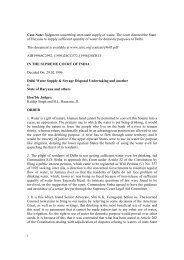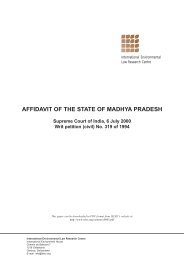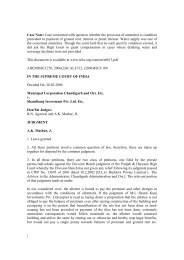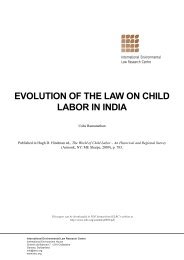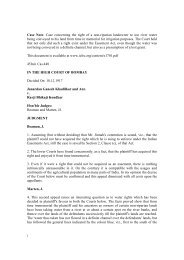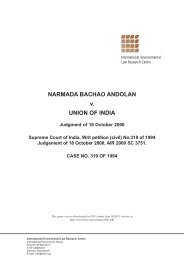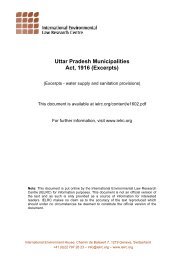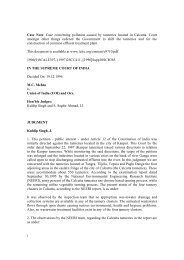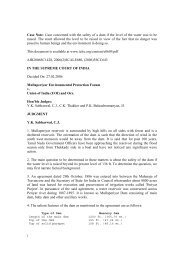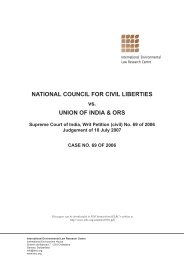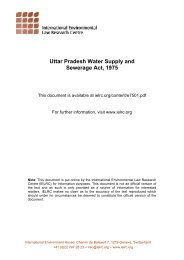Liability and Redress under the Cartagena Protocol - International ...
Liability and Redress under the Cartagena Protocol - International ...
Liability and Redress under the Cartagena Protocol - International ...
You also want an ePaper? Increase the reach of your titles
YUMPU automatically turns print PDFs into web optimized ePapers that Google loves.
2. Fault based/ strict/ absolute liability?Fault Based: One must prove intention/ negligence of defendant;Strict: No need to show intention/ negligence of defendant but it must be proved, for instance that <strong>the</strong> productwas defective;Absolute: Defendant has no defence open to <strong>the</strong>m such as act of God defence for hazardous activities.Strict liability was favoured above fault-based <strong>and</strong> strict. This was especially in <strong>the</strong> food regime practiceswhere it is difficult to prove intention <strong>and</strong> negligence <strong>and</strong> <strong>the</strong>re is need to ensure potential defendants take alldue precautions. Fur<strong>the</strong>r <strong>the</strong> liability should be joint <strong>and</strong> several to ensure that <strong>the</strong>re is fair allocation of responsibilitybetween defendants.3. Definition of liability regimeThe <strong>Liability</strong> regime should be comprehensive including: Civil; Penal; State liability – through joint <strong>and</strong> severalliability. The state should be responsible for public actors. An international civil liability scheme should beestablished to cover activities of multinational corporations (MNCs). MNCs should contribute to <strong>the</strong> liabilityscheme.4. Channelling of liabilityThere was no agreement on whe<strong>the</strong>r liability should be channelled to farmers. They however agreed that <strong>the</strong>seed producer, marketer/ trader <strong>and</strong> any entity not acting appropriately should be liable.5. Type of compensationCompensation should include financial/pecuniary aspects in <strong>the</strong> form of damages/fines <strong>and</strong> also restoration/reinstatementof <strong>the</strong> environment to <strong>the</strong> “best extent possible” as provided for in Kenya’s EnvironmentManagement <strong>and</strong> Coordination Act.6. Who should be compensated?A distinction should be drawn between damage to humans where rights holders should be recompensed <strong>and</strong>damage to <strong>the</strong> environment where government agencies should use funds in <strong>the</strong> public interest. In instanceswhere <strong>the</strong> government has sanctioned <strong>the</strong> activity, <strong>the</strong>re are potential conflicts of interest <strong>and</strong> funds could bemanaged by a different agency of government.7. Time limitsThe time limits should be determined through a scientific approach. With regard to impacts on human health,physiological effects manifest <strong>the</strong>mselves within five years generally <strong>and</strong> shorter time frames of about ten yearsshould be adopted. For impacts on <strong>the</strong> environment/ecosystems, longer time frames of thirty years should beadopted.8. Procedure to prosecuteA mixed system should be adopted with special technical courts <strong>and</strong> courts of first instance to hear evidence.Appeals should be addressed through <strong>the</strong> ordinary court process. Overall, <strong>the</strong>re is need to educate scientistson how <strong>the</strong> legal process works especially with regard to <strong>the</strong> question of evidence in technical matters <strong>and</strong> <strong>the</strong>avoidance of frivolous law suits. There is also need to build capacity for public interest litigation in biosafetywith <strong>the</strong> aim of protecting <strong>the</strong> interests of unorganized groups such as farmers <strong>and</strong> consumers against MNCs.15


